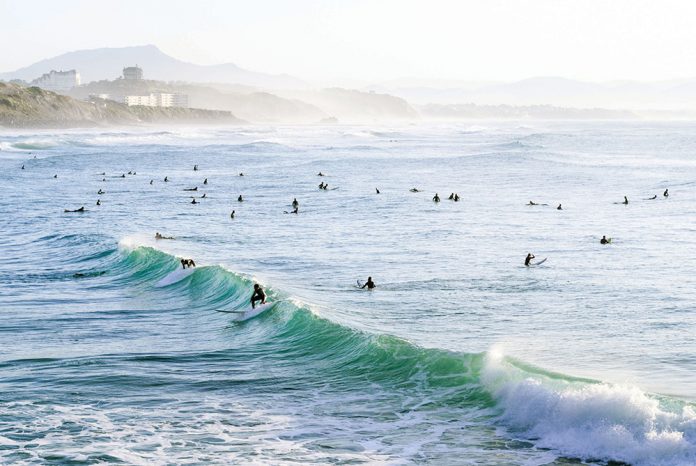It’s a common, recurring occurrence. A spell of heavy rainfall can easily overwhelm water catchment systems and cause flooding in urban areas. What you don’t want to happen is for this water to get contaminated with sewage water and released into bodies of water where it will be a major cause of pollution.
Storm overflows, often related to extreme weather conditions, are becoming a source of concern for many water companies in the UK and the region especially when they get contaminated with sewage water due to spill overs in the system. Along with rapid urbanisation and increased population growth, these environmental challenges can inundate (no pun intended) an already overburdened water and wastewater network.
A case in point is the popular summer destination of Biarritz in southwest France. This seaside tourist spot is home to about 30,000 people but this number swells to more than 120,000 during peak summer months when domestic and international tourists descend upon the resort.
Normally, the Basque Country Agglomeration Community (BCAC), the group that manages the town’s wastewater network, collects wastewater along with rainwater both of which will go through the same treatment process before being released out to sea.
Over the past decade, the region has been experiencing an unprecedented increase in rainfall. These frequent, often intense storms cause overflows in the municipality’s sewerage system before treatment and spills out into the sea, thereby polluting beaches. When this happens, the municipality has to close the beaches due to unchecked pollution. This not only poses huge health and environmental hazards, it also has negative effects on the economy as the municipality depends heavily on tourism revenues.
For this reason, BCAC adopted the SUEZ AQUADVANCED® Urban Drainage (AAUD) solution to meet these challenges head-on. This innovative tool is an integrated sewerage and stormwater system management software that can work with existing network systems (no need to build new infrastructure) to improve network operations.
The BCAC team benefits from the user-friendly interface directly linked to the company’s supervisory control and data acquisition (SCADA) system, which means the operators have direct access to detailed and uninterrupted overview of their infrastructure. Thus, they can monitor the hydraulic performance with ease and achieve smoother plant inflows and minimise overflow through the automated daily sewerage management features. They can detect potential blockages even before these become an issue, identify asset performance concerns, and subsequently improve environmental protection.
The software’s configuration with rain-radar nowcasting data gives them the ability to forecast upcoming weather events and review how these will impact their water collection system, especially in the event of overwhelming inflows. In BCAC’s case, this allows the network operators to work out, for instance, the proper time to pump out permitted amounts of sewage in waterways and prevent uncontrolled events in certain areas.
SUEZ customers in Saint-Etienne, France, who employ this software have reported many benefits, including much improved operations, reduced discharges, and better flow management. Due to the overall decrease in volumes of spilled water, as well as an increase in the processed volumes, Saint-Etienne had no more floods to report since the solution was deployed.
In Biarritz’s case, AAUD achieved a 50% reduction in storage tanks’ emptying time, which translates to increased storage utilisation. Using the software’s advanced computational systems and data analytics resulted in a 35% reduction in water volumes discharged into the beaches. This, in turn, reduced public beach closures and accelerated the beaches’ reopening times.
Water and wastewater companies in the UK and the rest of Europe are taking storm overflows seriously in the light of new government directives aiming for a significant decrease in water pollution. In the UK, companies have invested around £132 million to reduce the risk of sewage-contaminated flooding to properties, £300 million to maintain public sewerage systems, and
£2 million in property-level protection from April 2019 to March 2020.
With the implementation of smart tools like the AQUADVANCED® Urban Drainage solution, water companies will not only improve their operations and be compliant, but will see a significant decrease in their capital expenditure in the long-term.



